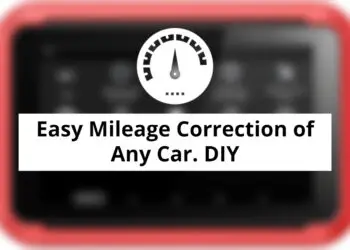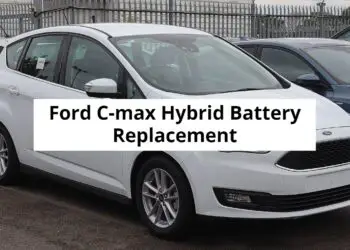Let’s take a look at various hybrid vehicle configurations and their features. From the standpoint of the structure and method of transmitting power to the wheels of the car, there are three configurations of hybrid systems,
- Series.
- Parallel.
- Series-Parallel(mixed/combined).
Series hybrid configuration

Let’s start by looking at the series configuration. In the configuration of a series hybrid, the internal combustion engine operates in the maximum fuel economy mode, it drives only the generator. The electricity generated by the generator at the expense of the internal combustion engine with the fuel tank is fed through the voltage converter either to the traction motor reversible machine M \ G or to the traction battery.
The electric motor transmits the required torque to the wheels through the transmission, and in the braking mode, it works as a generator, recharging the traction battery (braking energy recovery mode).
Such hybrids are marked with the abbreviation REEV (Range-Extended Electric Vehicle), or EREV (Extended-Range Electric Vehicle).
You may like to read: Extended-Range Electric Vehicles
Series hybrids can be equipped with ultracapacitors or a flywheel Kinetic energy recuperation system which can increase efficiency by minimizing battery losses. They transmit peak energy during acceleration and use regenerative energy during braking. Therefore, the ultracapacitors are charged at low speed and are nearly empty at maximum speed.
This solution results in a less deep discharge of the battery and the stress factor of the battery. Some vehicle designs have separate electric motors for each wheel. Integration of the engine into the wheels has the disadvantage of increasing the unsprung mass, which reduces driving performance.
The advantages of individual wheel motors include simplified traction control no traditional mechanical transmission elements such as a gearbox, transmission shafts, differential Some 8×8 and 4х4 military vehicles use individual motors.
By the way, a hybrid fuel cell vehicle always has a series configuration the engine-generator combination is replaced by a fuel cell.
Disadvantages of series hybrid cars
- The internal combustion engine, generator, and electric motor are designed for the full power of the vehicle. Consequently, the overall weight, cost, and size of the drivetrain can be prohibitive.
- Low efficiency of the mechanism for transferring energy from the internal combustion engine to the driving wheels of the vehicle then it is a during long-distance highway driving, the overall efficiency is lower than that of a conventional transmission due to several energy conversions.
- Inability to achieve the addition of the powers of the alternative drive motors.
- The impossibility of movement in case of complete discharge of the battery. it takes a certain time to charge from a working internal combustion engine.
Advantages of series hybrid cars
- The simplicity of operation and no complicated transmission. There is no mechanical connection between the combustion engine and the wheels. There is no conventional mechanical transmission elements gearbox, transmission shafts. Also separate electric wheel motors can be easily implemented.
- The constant operation of the internal combustion engine in the most economical model. That is, the internal combustion engine can operate in a narrow rpm range most efficient range even when the vehicle is changing speed. Also, production hybrids are relatively efficient in city driving with frequent stops.
Parallel hybrid configuration

Let’s move to parallel hybrid systems. Parallel hybrid systems have an internal combustion engine and an electric motor that is connected in parallel to a mechanical transmission. That is, the parallel configuration provides for a mechanical connection of the internal combustion engine with the gearbox and the traction motor with the driving wheels of the car.
The electric motor is powered by a traction battery. Most designs combine a large electric motor-generator unit into a single unit often located between the combustion engine and the transmission, replacing the conventional starter motor and the alternator. The battery can be charged during regenerative braking and while cruising when the engine power is higher than the power required to drive.
Since there is a permanent mechanical connection between the wheels and the engine that is no clutch, the battery cannot be charged when the vehicle is stationary. When the vehicle is using electric traction only, or during regenerative braking the internal combustion engine is not working it is disengaged by the clutch or not receiving power, that is, it is idling Since the torque from the input shaft can be directly transmitted to the wheels the efficiency of this hybrid is higher.
However, in terms of fuel and environmental indicators, the parallel circuit is inferior to the series one the internal combustion engine cannot operate in the economy mode all the time.
It is worth mentioning that in separate compositions of the parallel circuits, the electric motor can be connected directly to the crankshaft of the internal combustion engine or utilizing the clutch to the vehicle transmission.
Parallel hybrid configuration modes
- Electric traction only mode: it’s working up to a speed of usually 40 km/h. the electric motor runs only on battery power, which is not recharged by the internal combustion engine. This is the usual way to get around the town and also in reverse gear as the speed is limited in reverse gear.
- Engine power only mode: at speeds above 40 km/h, only the combustion engine is running. This is the normal operating mode on the road.
- Combined mode: There can also be an operation mode in which the internal combustion engine and electric power are used at the same time: This mode is used if more power is required that is during acceleration or at high speed, the electric motor starts to run in parallel with the common engine so the car reaches more power.
- ICE only mode: In this mode, the vehicle is only powered by the internal combustion engine. but battery charging also occurs. This mode is used when less power is required and excess energy is used to charge the batteries. When the engine is running at a higher torque than necessary, it operates with higher efficiency.
- Regenerative braking mode: During braking or deceleration electric motor uses the kinetic energy of the moving vehicle, converting it into electrical energy.
Sometimes there is a possibility to find cars where an additional generator is used. In this case, the batteries can be recharged, even if the car is not moving, the internal combustion engine works without the transmission. But this system adds weight and cost to the hybrid electric vehicle.
Disadvantages of parallel hybrid cars
- It a quite a complex system.
- Unlike a series scheme, in parallel configuration ICE does not operate in a narrow or constant rpm range, so efficiency drops at low rpm.
- Since the internal combustion engine is not disconnected from the wheels the battery cannot be charged at the state of rest except for models where an additional generator is used, but in this case, the system becomes even more complicated and expensive.
Advantages of parallel hybrid cars
- Overall efficiency is higher during cruising and long-distance highway driving.
- Wide choice of operating modes, that is, the flexibility of switching between electric power and internal combustion engine power.
- Compared to series hybrids, the electric motor may be less powerful than the internal combustion engine, as it improves traction.
- Only one electric motor/generator is required.
Examples of parallel hybrid vehicles are the Honda Insight, Honda Civic, the Chevy Malibu, BMW 7Series ActiveHybrid, and the Toyota Prius.
Series-Parallel(mixed/combined) hybrid configuration

This configuration combines the advantages of both the series and the parallel schemes. Depending on the driving conditions, the car can move either on electric traction, or on the internal combustion engine, or in hybrid mode.
There is a double connection between the engine and the drive axle: mechanical and electrical. This configuration allows mechanical and electrical energy to be interconnected.
Power-sharing devices are integrated into the transmission. The power supply for the wheels can be mechanical, electrical, or both. The same is in parallel hybrids.
An electric car always starts faster than the cars powered by an internal combustion engine. This is because a combustion engine’s torque is minimal at lower RPMs, as the engine is its air pump. At the same time, the electric motor delivers maximum starting torque and is well suited to compensate for engine torque deficits at low revs.
A combined hybrid can use a smaller, less flexible, and highly efficient engine. At low speeds, the combined system works like a series HEV, and at high speeds, where series transmission is less efficient, the engine takes over.
This system is more expensive than a purely parallel system as it requires an additional generator, mechanical power split system, and more processing power to drive the dual system. Alternative motors can be connected to the same or different wheel axles. In the first case, a hybrid gearbox with a planetary valve is used. For the second option, a specific transmission is not required, but the possibility of charging the traction battery from the internal combustion engine is excluded.
In both versions, the electricity generated in regenerative mode by the M/G machine is fed to recharge the traction battery. The mixed hybrid is also used in the all-wheel-drive models. At the same time, the wheels of the front axle are driven by a combined drive, as in front-wheel-drive models, and a separate traction motor is used to drive the wheels of the rear axle.
Advantages of combined hybrid cars
- Maximum flexibility in switching between electric power and internal combustion engine power.
- Dividing the power supplied by the engine from the power consumed by the driver allows for a smaller ICE that is lighter and more efficient.
Disadvantages of combined hybrid cars
- The complexity of the system and high cost. They are more expensive than a parallel hybrid.
- The efficiency of the power train transmission depends on the amount of energy transferred along the electrical path, due to the presence of different converters, each with its efficiency, resulting in lower efficiency of the entire path as a whole.
- In terms of numbers, the efficiency is approximately 70% compared to a purely mechanical route with an efficiency of 98%.
So, this concludes our consideration of this topic. we hope that everything was as simple and clear as possible. In case you have any questions leave a comment below. Goodbye!



